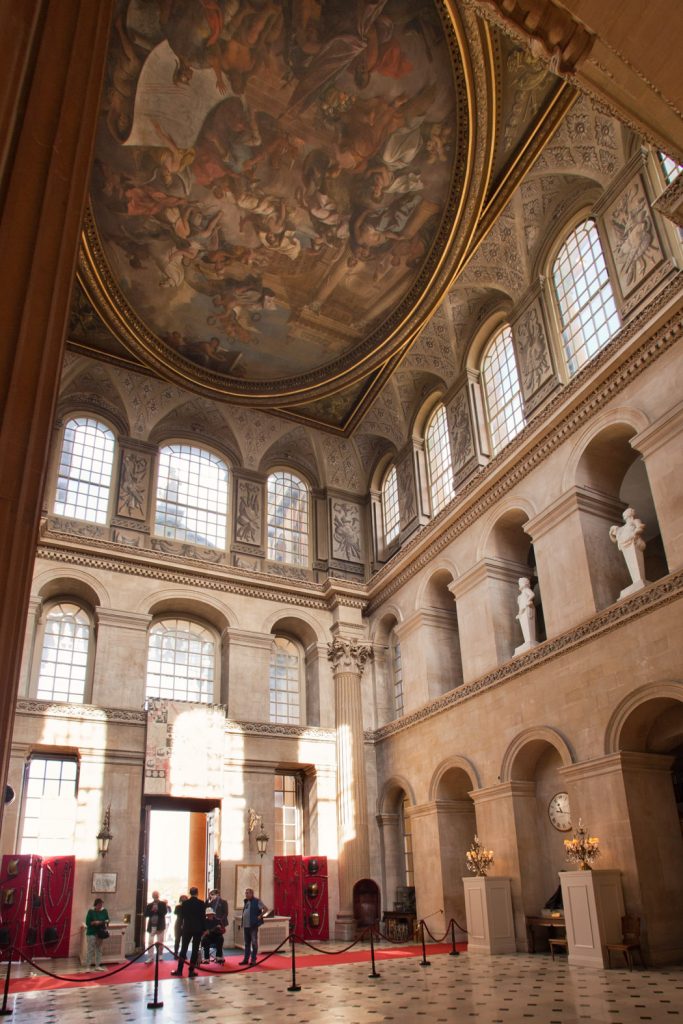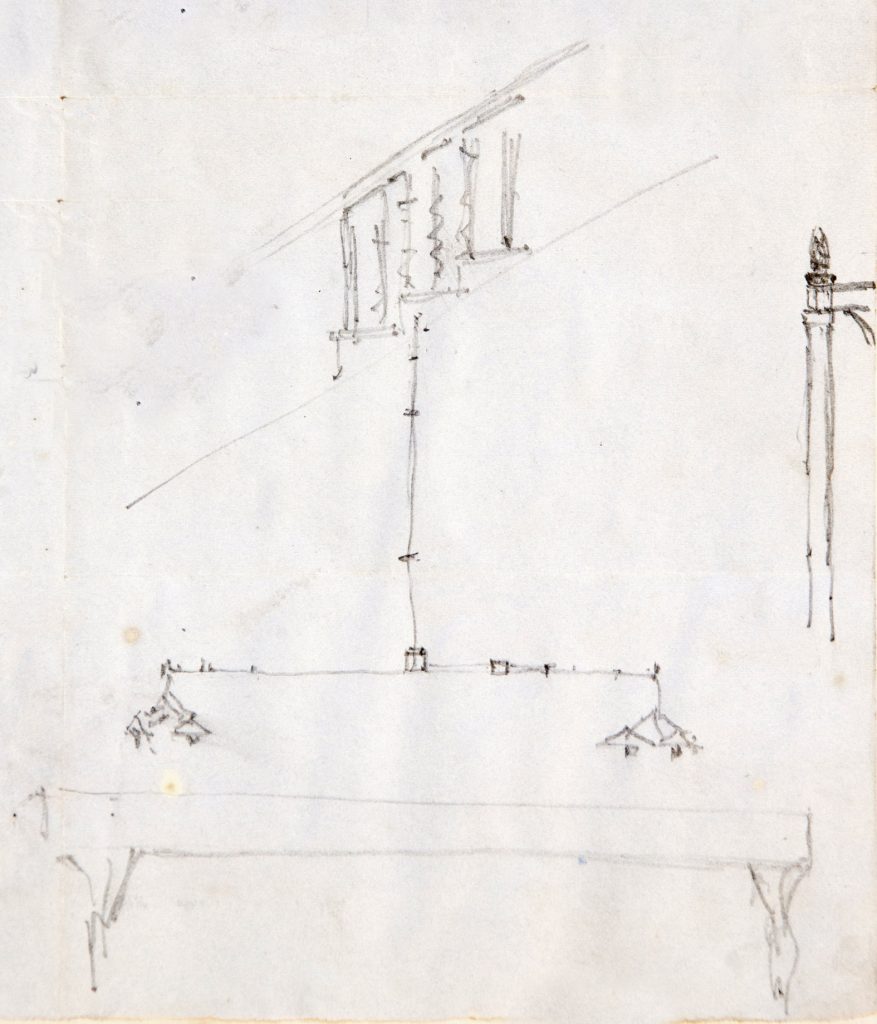While taking visitors around the house on Doors Open Day it occurred to us what a complex history of alterations has occurred over time. There are few parts of the house that haven’t been altered over time, but the impressive stair hall has perhaps the most complicated background.
The space as we see it today is nothing like Sir John Vanbrugh, the original architect, intended. Whilst there are some remainders from his time, particularly the painted trompe l’oeil urns in their alcoves, and the staircase itself, it is virtually unrecognisable. It was long thought that the interior of the house wasn’t finished by Vanbrugh, but we now know different, and KWAG has established its original appearance through diligent research and close inspection of historic drawings.
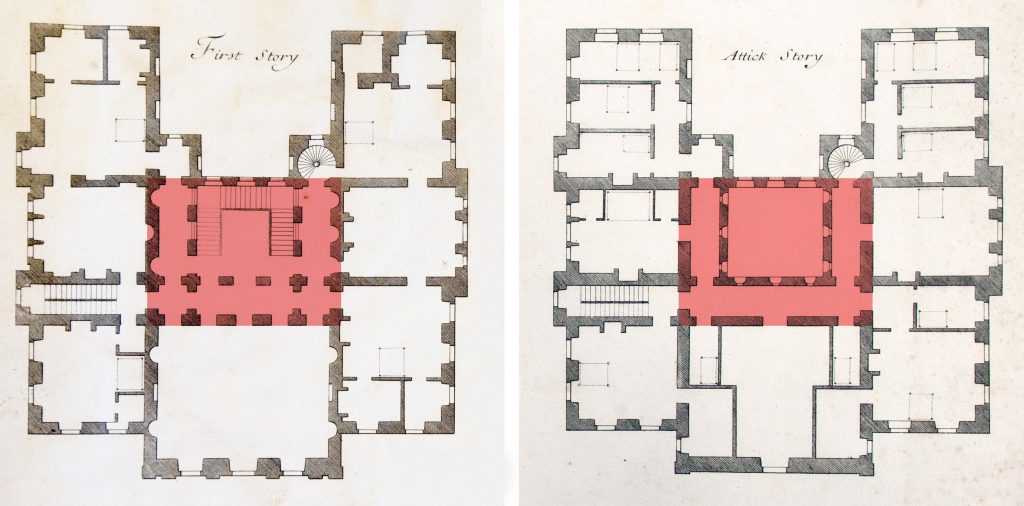
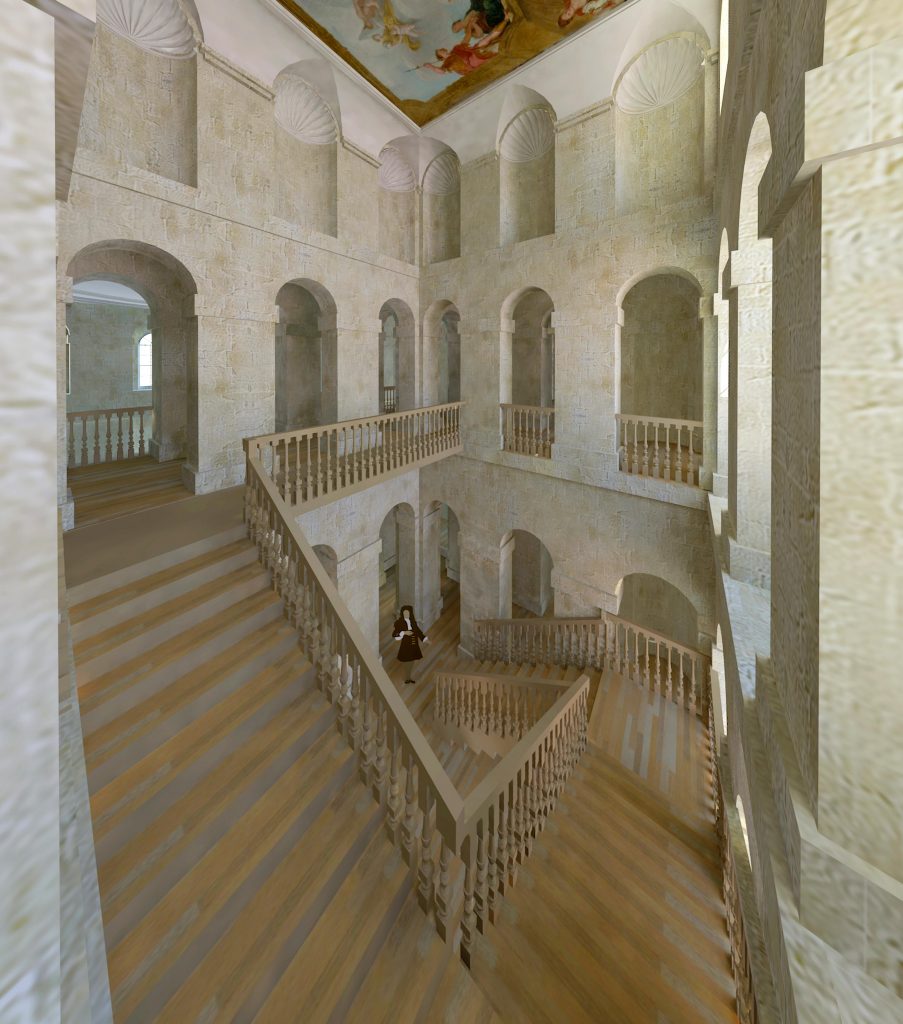
The staircase remains in its original location, but, when the house became a home for the first time, in 1716, it was enclosed in a birdcage of stone arcades on all four sides. You would enter through a single arched door in the middle of the south-west wall. In front of you, beyond an arcaded passage the stair would have dominated the space, with a backdrop of tiered glazed arched windows reaching up to the ceiling. The rhythm of arches was repeated on the other three sides of the stair, tightly enclosing and supporting it on all sides. This formed a series of passages on all floors from which the various rooms could be accessed.
Rather than today’s arrangement, with its grid of skylights, there was a deeply coved ceiling with a solid, flat central panel; this may have been decorated with a painted allegorical scene in keeping with many important interiors of the time.
There are parallels between what one existed at Kings Weston and Vanbrugh’s more grandiose Hall of Blenheim Palace. Here too the architect incorporated arcaded passages that looked down into the main space, albeit on a more expansive scale. There is also the deeply coved ceiling that we know Kings Weston possessed until later alterations. A painted ceiling centrepiece like that at Blenheim would have matched the interior design approach to the painted urns that still exit.
Our computer reconstruction of the stair hall must be a relatively accurate representation of the original appearance; but what happened to it?
The house passed from the Southwell family to the Miles family in the 1830s. It was the second generation of the Miles’, with Philip William Skinner Miles, that things changed. The year following his inheritance of the Kings Weston estate Skinner Miles commissioned the architect Thomas Hopper to make huge changes. The ambition was to turn the aging mansion into a modern family home. New kitchens, enlarged reception rooms, and better sanitary accommodation were required.
Perhaps Miles found the stair hall too dark and restrictive, or maybe the space used for architectural drama was in greater need for practical purposes. Whatever the reason work began in 1846 to open out the space by removing the integral arcades around the stair. Original plans had been to replace the 1700s staircase completely, but in the event it was kept. The loss of its supporting walls meant that a new approach had to be found to hold it up. Using modern building technology the architect engineered new open galleries where the arcades had once been. These galleries were supported on composite cast iron and timber beams that spanned between the ‘tower’ structures within the space that could not be removed.
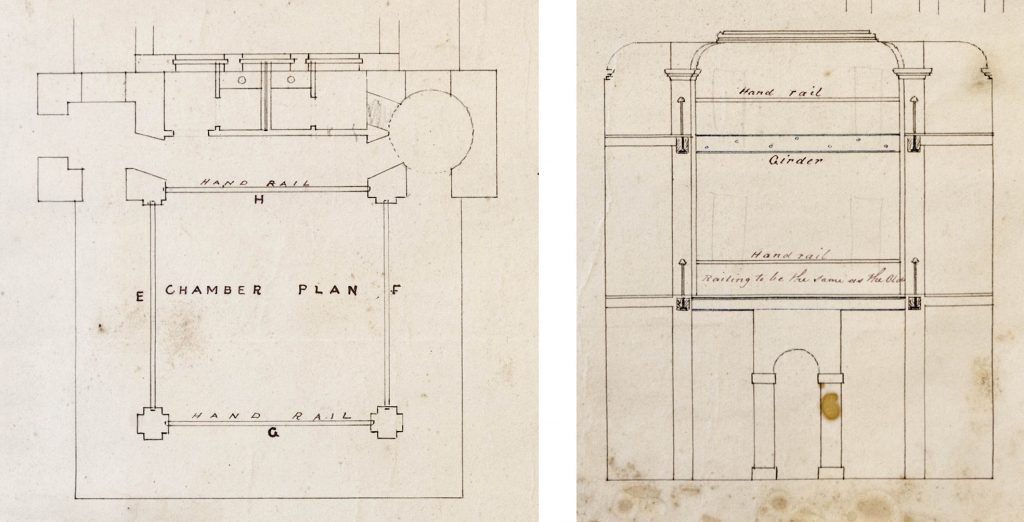
Left: the First floor plan showing how two WCs were squeezed between the gallery and the new alignment of the outer wall against the windows.
Right: Vanbrugh’s original coved ceiling is indicated in the sectional drawing, along with the proposed “girders” supporting new open galleries.
The new beams, cast in Gloucester and sailed to Bristol in 1847, were erected in the space. These would now carry the load of the newly free-floating stair. Iron rods were connected through the beams and dropped down to connect with the stair landing. A secondary steel beam was threaded through the landing and bolted to the suspension rods with giant ornamental nuts formed like upturned pineapples.
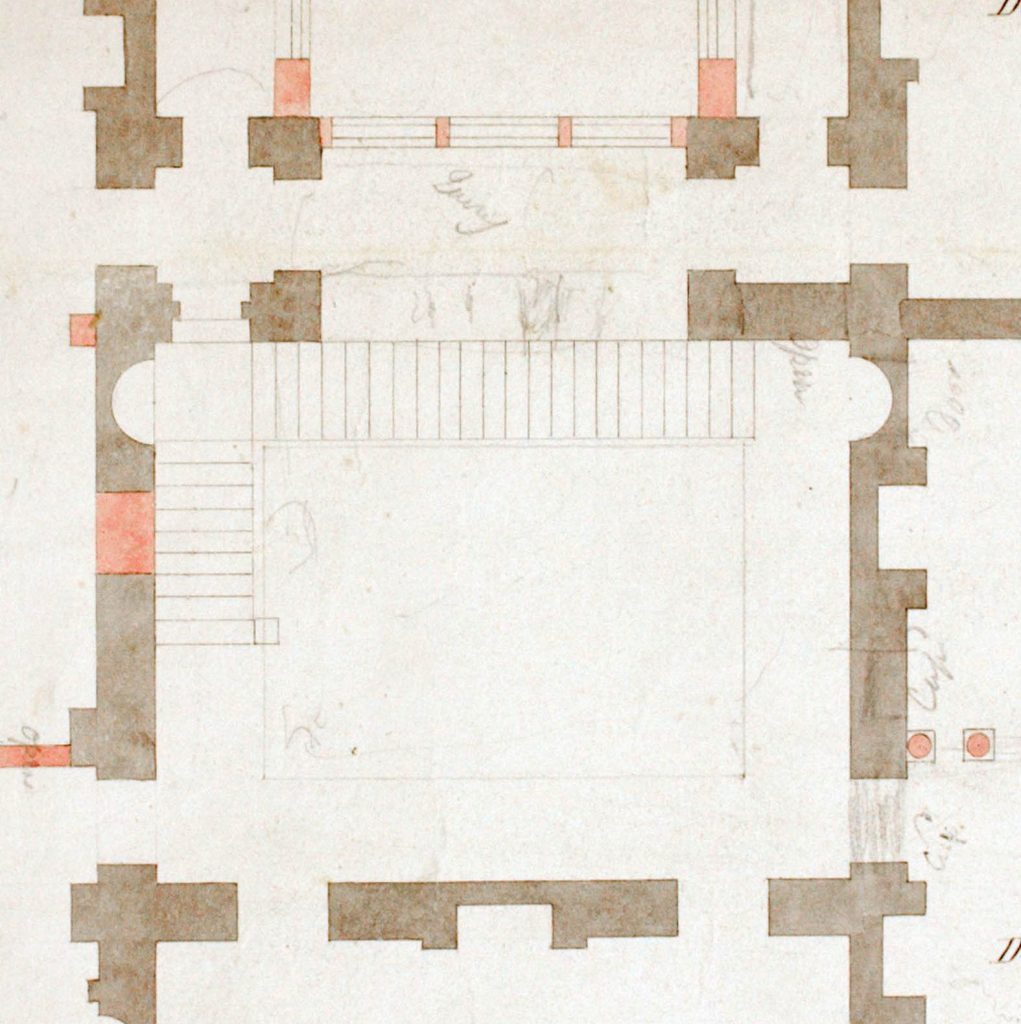
At the same time the whole of the back wall of the stair hall was being carefully but completely removed, along with its arched windows. A letter written by Henry Rumney, the local architect entrusted to oversee the work on behalf of Hopper and his client, says it was progressively dismantled “having properly marked the stones for refixing & the windows & other work connected also”. A temporary timber truss supported the ceiling during these works. The care taken in dismantling the rear wall was with the intention to rebuild it on a new alignment, about 12 feet out from its original location, and the spot where we find it today. Peculiarly this appears to have been thought necessary only to allow for new toilets to be incorporated in the newly acquired space.
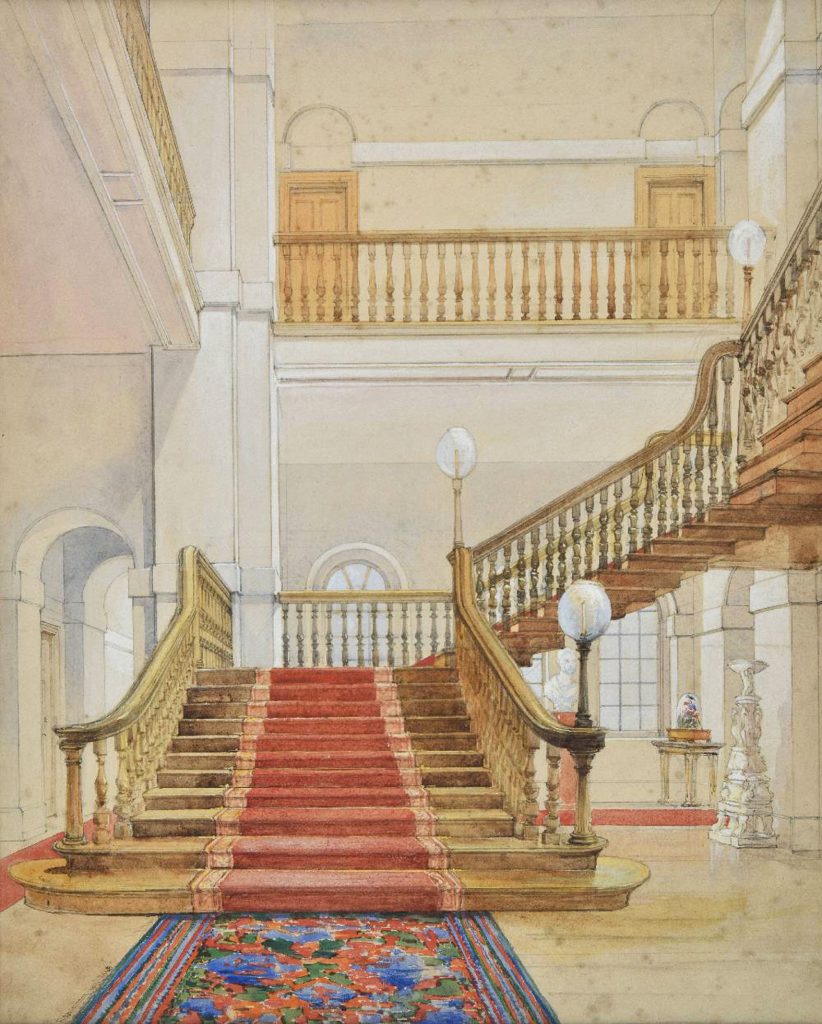
With toilets now blocking the old back windows another approach was required to light the stair. Hopper’s solution here was to add a series of roof lights to the existing flat ceiling to light it from above.
All these works must have been undertaken at huge expense, but the benefits look to have been meagre, especially to modern eyes that lament the terrible loss of Vanbrugh’s interior. For the Miles family new toilets would no doubt have been an incredible relief (no pun intended!). On completion in the new room was recorded in a watercolour painting by Thomas Rowbotham. The newly acquired floorspace was quickly occupied for a fashionable billiard table shortly after; an iron bracket still fastened two thirds of the way up the stair was designed to hold suspended lights that would have illuminated the game.
It no longer has the integrity of the original design, and Hopper’s changes are a bit clumsy and functional rather than beautiful. Hopper must have recognised the compromised nature of the results: As if in tribute he’d virtually reproduced Vanbrugh’s dramatic original arrangement in his own work at Amesbury Abbey. Today the stair hall remains a grand focal space of Kings Weston House, one containing interesting and important features from several periods. Perhaps though, it is the story of how it took on its present state that is most interesting.


